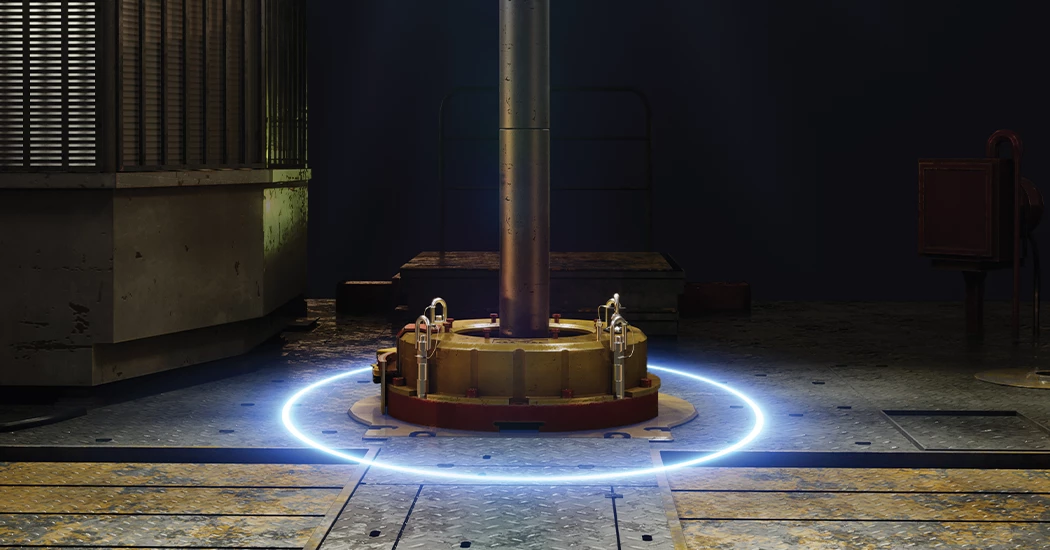The safest way to handle tubular running services is not to handle them
No matter how advanced the energy industry becomes, we will still have to install pipe into the ground.
One of the most fundamental aspects of the oil and gas industry, tubular running services (TRS) has certainly evolved over the decades. When field personnel manually made up tubulars and ran lengths of pipe into freshly drilled wellbores, the process was fraught with intrinsic challenges. The task itself was time consuming, often dragged down by significant nonproductive time (NPT), to say nothing of the unintentional errors that damaged tubulars, produced inconsistent makeup of connections, and proved an unsafe environment for many a field hand.
Modern mechanised methods significantly streamlined the process. Remote-controlled technology began to position and make up tubulars, improving overall efficiency while simultaneously making the rig site safer for personnel by eliminating hands-on operation and removing field personnel from the red zone.
The digitalisation of the oilfield accelerated the energy transformation, enabling operators to channel computer-controlled efficiency and artificial intelligence to drive efficiency even further and faster while still keeping workers away from dangerous areas.
The paradigm of tubular handling is shifting
But as the energy industry shifts, so does the business model of tubular running services. In the past, operators took on the responsibility of sourcing many third-party services such as TRS operations, remote-operated sub-sea vehicles and cuttings management. More and more, however, operating companies are requiring drilling contractors to include these services in their drilling contracts.
As the leader in TRS operations, Weatherford experts understand one way to streamline TRS operations is to implement a single, fully automated, fully integrated system to conduct tubular running for all drilling, casing, and completion operations. The innovative VERO OneTouch Automated Tubular System consolidates all three operations into a single, hands-free system, empowering drillers to provide revolutionary rig floor safety and efficiency with fewer personnel requirements and greater marketability.
What sets the OneTouch system apart is the speed by which the system transitions from drilling to casing to landing operations. With conventional methods, each transition consumes valuable rig time on the critical path — especially on a deepwater rig. Several field personnel manually connect, disconnect, and set up equipment, leading to unintentional errors and raising the safety risks.
The OneTouch system eliminates nearly all handling situations. The system features an exchangeable cassette system for the transition between drilling, casing, and tubing in less than six minutes. This completely hands-free system integrates into the driller’s chair, removing personnel from the red zone and reducing the overall personnel on any rig site.
Engineered solutions to fundamental operations
But as advanced as TRS operations have become in the 21st century, there are still areas for improvement in the fundamental aspects of handling tubulars, including an obvious one: dropped casing and tubing strings. In addition to the safety hazards to field personnel, dropped strings usually result in long fishing jobs that are not always successful, labour-intensive and costly sidetracks, and, in the worst cases, well abandonment and loss of assets.
Historically there have been safety interlock systems developed and deployed to minimise the risk of dropped strings, but an innovative new framework provides an additional layer of security to prevent these occurrences altogether. Adaptable to any hydraulic spider, the StringGuard technology performs independently of elevator type and function, working in tandem with the existing safety interlock system to provide an additional layer of security.
“Weatherford is so confident in these technologies,” said Mark Porter, Global Vice President, Tubular Running Services, “that we are offering a TRS assurance commitment to customers that will provide cost certainty by eliminating downhole connection makeup problems, rejected joints, and dropped strings when handling premium threaded tubulars at the rig site.”
The Vero OneTouch system, paired with StringGuard technology, delivers both connection and operational integrity, significantly reducing the influence of human factors, removing errors and oversights that can lead to safety incidents and costly remediation, safeguarding not only operators’ assets and investments but their reputation as well.
KEEPING THE ENERGY INDUSTRY CONNECTED
Subscribe to our newsletter and get the best of Energy Connects directly to your inbox each week.
By subscribing, you agree to the processing of your personal data by dmg events as described in the Privacy Policy.















